Guardian of the City
| April 11, 2022Rav Dov Kook resides in Teveria but occupies a world of mystery
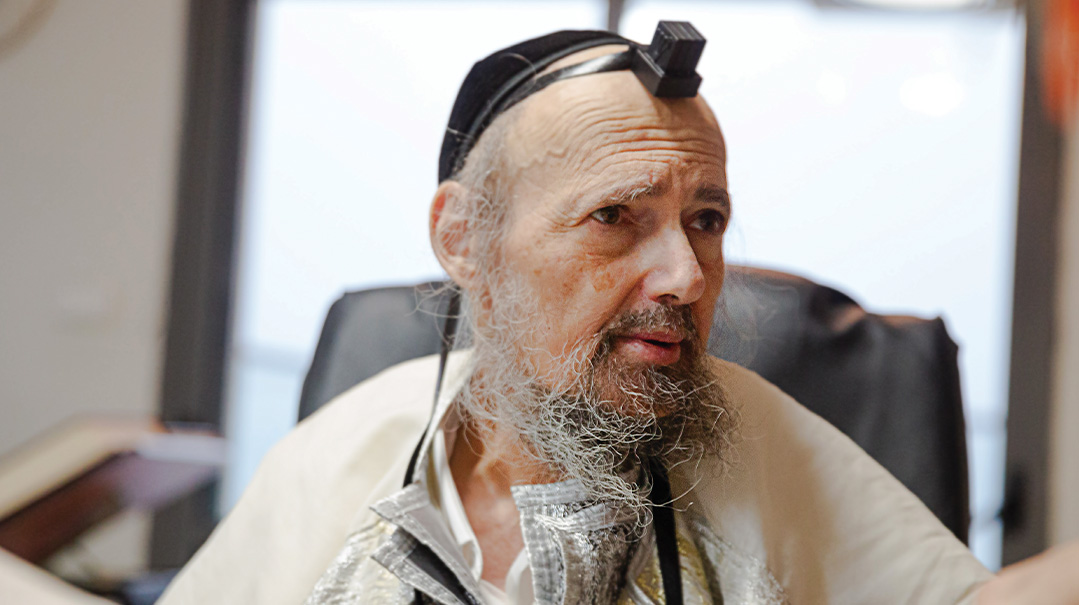
Photos: Elchanan Kotler
It’s early afternoon, and the little shul in Teveria is largely empty.
The Minchah people will be coming later, and the Shacharis crowd left hours ago — except for one lone figure, still standing in the same place, on the eastern wall, amid stacks of seforim and siddurim. Here, there’s a fire burning and it’s hard to tear one’s gaze away.
He stands strapped in the tefillin that stay on all day, wearing a white Bukharian-style kippah and a golden caftan. Under it are at least a dozen (some say 50) pairs of tzitzis embroidered with gold and silver threads, which makes it hard to discern just how bony and emaciated his holy body really is.
He has been standing here for hours, in deep concentration, since the haneitz minyan for Shacharis. Suddenly, he bows down on his knees as his tall body literally folds in half. It’s hard to tell if he’s standing or sitting in the air. Now he rises and bends again, his eyes closed tight.
The wrinkled hand moves to support the broad forehead, the protruding veins of which are said to form the letter Shin. It’s a motion that might indicate an oncoming headache — yet after a few moments of mental exertion, the hand suddenly moves aside, as it finds a paper and pen and begins furiously writing down chiddushei Torah that have been revealed in the middle of davening.
Then the storm continues, with bowing and prostrations.
The scene calls to mind Chazal’s description of the tefillah of Rabi Akiva, who is buried just a few hundred yards from this spot: “When he prayed alone, a person put him in one corner and found him in another corner, because of the many bows and prostrations.”
It’s 1,900 years later, and Rav Dov Isser Hakohein Kook is following the same pattern. He prays and bows, rises and again bows. He has been doing this for decades, day and night, and no one knows his secrets.
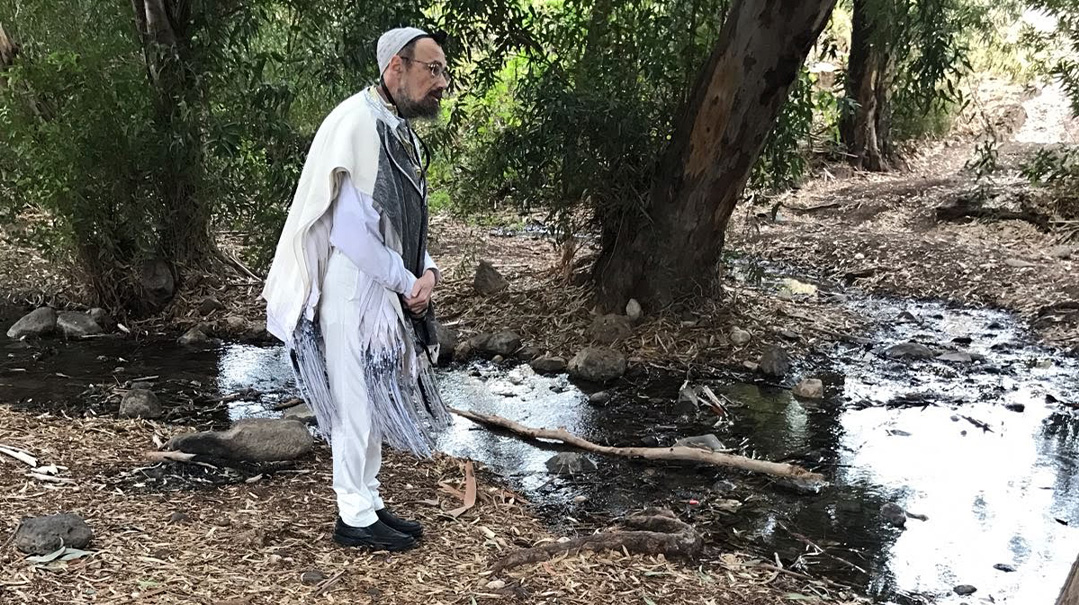
No Time to Sleep
Right alongside this sublime scene, there is another enterprise taking place, although Rav Dov seems oblivious. The home and beis medrash of Rav Dov and Rabbanit Leah Kook are open to anyone in need, and while the beis medrash contains a large all-day kollel, around the other side of the courtyard you can find some of the town’s down-and-outs, who know they’re welcomed here with food, compassion, and even shelter and a little cash.
Rabbanit Leah Kook is a bit of an enigmatic figure in her own right. For three decades she’s been inspiring women around the country with her revival meeting-style inspirational evenings and has nonstop Tehillim going on in her home all day (to a rhythmic chant and hand-clapping the regulars all know). She’s open about her life and mission, but when we set out to try and learn more about Rav Dov Kook, we had no idea how difficult it would be. Time and clocks and schedules do not exist in the realm of avodah of the Angel of Teveria.
“With the Rav,” explains Rabbi David Sadeh, one of the people closest to Rav Kook, “what needs to be done right now is what he does. When he’s ready to daven Shacharis, for example, you can know only when it begins, but there’s no chance of knowing when it ends. It can take three hours, or nine.”
His nonstop davening and learning schedule don’t leave much time for eating or sleeping — but that’s fine for Rav Dov, since he barely does either.
“He used to fast every day,” Reb David relates, “and eventually it became fasting for a full week straight, from Shabbos to Shabbos. He would taste something for Melaveh Malkah and then start fasting until the next Erev Shabbos. A few minutes before Shabbos, he would drink something, so as not to come into Shabbos in a fast.”
Today, with his body so weakened, he’ll sit down “to taste something.” It could be a fresh date, or something left over from Shabbos that he finds in the refrigerator, or a small cup of grape juice.
Rabbi Sadeh admits that there have been times when Rav Dov’s weakened body simply collapses. He remembers one Shabbos morning when the Rav was feeling faint and could barely move, shaking and perspiring. “He asked me to help him go down to the mikveh, but he could barely walk. I began to help him remove the pile of tzitzis that he wears, and I actually counted 52 pairs. I couldn’t believe it. After the tevilah, he began to put on the whole pile. ‘Rebbi,’ I cried, ‘why do you need all this? It’s too heavy for you right now!’ And he chided me, ‘What do you want, look at me, I have no Torah or tefillah now. Do you want me also not to have tzitzis?!’
“The truth is, no one knows the real reason he does this,” Rabbi Sadeh continues. “But when a secular journalist once asked the Rav about it, he answered, ‘I’m wearing for you as well.’ ”
Sleep is another casualty of Rav Dov’s grueling schedule. “He sleeps when he collapses,” says Reb David. “It could be after a full day of learning and davening, or after two days. Until about ten years ago, he didn’t even have a bed. Just a pillow that he would lean on in shul. Now he’s weaker, and needs a bed.”
But make no mistake — this bed upon which Rav Dov collapses fully dressed, with his shoes on, is never used for more than two hours at a time. Rav Dov once told his son, “If I have time to put on the pajamas, that means I have another minute to learn.”
According to Rabbi Sadeh, “He’s always learning, davening, or writing, but he’s the only one who knows when each of those will happen. We stand at the side and try not to disturb, although we aren’t always successful.”
We head out to a very regular-looking Teveria gas station with an adjoining convenience store that’s full of people at this hour. Yet only a few know the secret that is hidden beneath the steamy asphalt: one of Rav Dov Kook’s secret “bunkers.”
One of the partners in the gas station is an admirer of the Rav, and when he built the station, he added an underground cellar. Descending one level below ground, behind a heavy steel door, we discover a small shul and another dim, narrow room with a table piled high with seforim: nigleh, nistar, Kabbalah, chassidus, history, and halachah.
This is one of Rav Dov’s “hideouts,” away from the many petitioners who seek him out after he finishes his tefillah. He’ll never rebuff someone who comes with a question or a personal matter, so in order to complete his learning quota, he simply disappears.
But Teveria’s a small town, and secrets tend to get discovered here. People eventually found out about this hiding place, and so several more were organized around the city — one of them in a room adjoining the kollel in the Kivrei Amoraim — but no one except for Rav Dov himself knows where he’ll be on any given day; they can only attempt to guess.
In theory, there’s a team of drivers to transport Rav Dov to his various venues, Teveria residents who want the merit of taking the Rav in their car. But his schedule, or lack of one, doesn’t allow for too much planning.
“When the Rav finishes davening, he just goes outside and looks for someone with a car. Sometimes he’ll stand on the street and try to flag a hitch, in order not to waste time,” Reb David says. “I once saw him on the back of a motorcycle.”
Today, for example, no one knows when the Rav will finish davening and where he will go from there. But just in case, Reb David decides to straighten up the “bunker” and makes sure the Rav hasn’t forgotten any of his writings here. All his chiddushim are collected, and will eventually find their way into one of his published volumes: to date, Rav Dov Kook has produced close to 200 seforim on the entire spectrum of Torah topics.
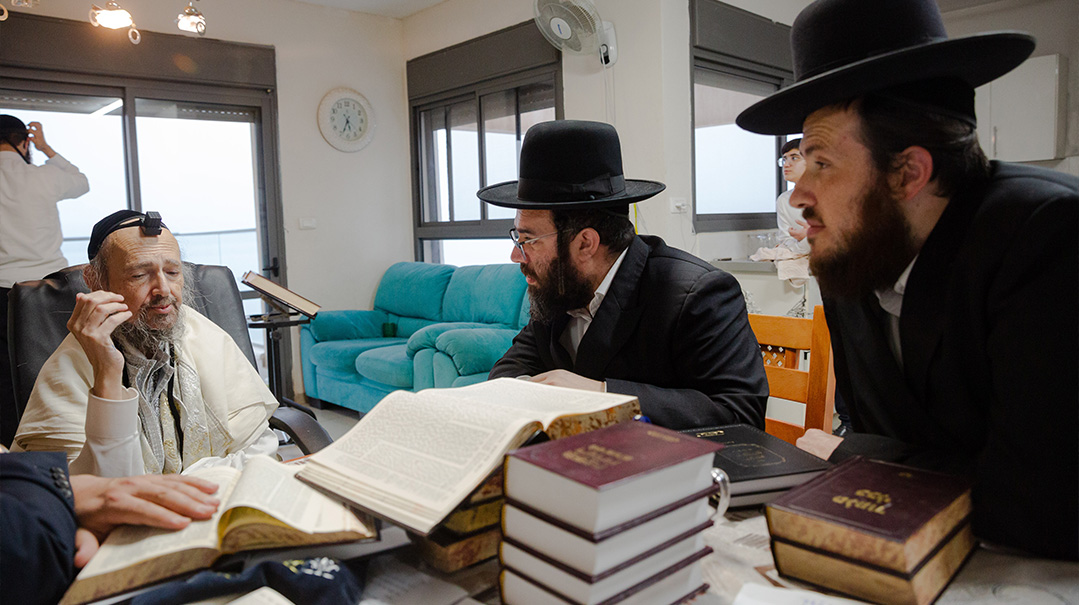
Rav Dov gives us a lesson in Geulah, Mashiach, and final tikkunim
Nothing to Taste
A person who encounters Rav Dov Kook for the first time in his beis medrash, surrounded by a mix of Sephardi taxi drivers and merchants in polo shirts alongside chassidim with long peyos, wearing his white clothes and davening with a Sephardic enunciation in the nusach of Eidot Hamizrach, would have a hard time believing that he is a product of elite litvish yeshivos and a scion of a prestigious rabbinic family.
He was born on Rosh Hashanah 5717/1957 to his father, Rav Nachum Kook, a rav in Ramat Gan (and older brother of Rav Simchah Hakohein Kook) who was active in various battles relating to the preservation of the religious and halachic character of Israel, including the prevention of autopsies and fighting for Shabbos observance.
Rav Dov’s grandfather, Rav Raphael Hakohein Kook (a nephew of renowned chief rabbi Rav Avraham Yitzchak Hakohein Kook), served as the rav of Teveria from the establishment of the State until his passing in 1971. The circle would close when Rav Dov himself would return to the city and settle there.
But his prestigious background notwithstanding, one talmid explained, “Lofty souls have their own yichus.”
As a bochur, Rav Dov learned in Kol Torah and Ponevezh, but even then, his ascetic tendencies were visible. MK Rabbi Uri Maklev, who learned with him in both yeshivos, shares some memories from those years.
“We were friends growing up together, and eventually we became chavrusas in yeshivah,” Maklev tells Mishpacha. “But there was one thing we always knew: When it came to meals and other creature comforts, he needed help. So we saved him portions, because he only came to eat after Minchah, which took him much longer than everyone else, and often by the time he finished, there was no food left in the dining room. So we decided to save food for him, and he always ate it cold, which didn’t bother him in the least.
“Some time later, I noticed something strange. I discovered that after his long davening, before he came down to eat, he disappeared for a few minutes. One day I decided to follow him, and saw that he closeted himself in the dorm room for a few minutes before coming down, and then came down to eat the portion we had set aside for him.
“I did a bit of detective work and discovered the secret. Dov Kook would take a little plastic bag with him and pour in very strong vinegar. I realized that before he put any food in his mouth, he first spilled vinegar on it, to ruin the flavor.
“Suddenly I realized why he was losing so much weight. I was afraid for his health and confronted him. Of course, he was evasive, but I couldn’t allow him to continue doing this, so I called his father and told him what I discovered. After that, at least according to what I could see, the practice stopped. Even though we always knew he was an illui with tireless diligence, now we really knew who he was.”
Frozen in Fear
When Dov Kook became of age, it was clear that he would need a different kind of shidduch, a woman who could bear a life of absolute mesirus nefesh for Torah and avodas Hashem. The appropriate match was found: Leah, the daughter of Rav Yitzchak Zilberstein, venerated posek and rav of Ramat Elchanan in Bnei Brak, and the granddaughter of Rav Yosef Shalom Elyashiv.
In 1959, the year Leah was born, dire financial straits led her parents to move in with her grandparents, the Elyashivs. In the tiny apartment on Rechov Chanan in Meah Shearim, Rav Elyashiv would rock baby Leah to sleep, blessing her that she should become a baalas chesed and marry a talmid chacham.
From the time she was a child, material things meant nothing to her (after she became a celebrity with her fiery lectures around the country for women, she was once invited to appear on television — and she did, wearing a snood and housecoat with a raincoat over it). When it came time to consider shidduchim, Rav Dov Kook, a likeminded young scholar, seemed appropriate.
Despite their personality differences — Rav Elyashiv epitomized order and discipline, his time calculated to the second, while Rav Dov’s schedule unfolds according to a calculus only he can divine — a special bond existed between Rav Dov and his wife’s grandfather. Rav Elyashiv had deep respect for his grandson-in-law, and in one wedding photo, you can see the chassan, Rav Dov, speaking to his grandfather animatedly.
Rav Yekutiel Ohev-Tzion, a rav in Teveria and a close talmid of Rav Dov involved in editing his seforim, relates that he spoke to his rebbi about that photo. “What were you talking about there?” he asked. Rav Dov didn’t understand the question. “What do you mean? What is there to talk about besides Torah?”
Soon after their marriage, the young Kook couple was invited to their grandparents for a Shabbos. Both host and guest had very busy daily and nightly schedules of learning and barely had time to talk. But in the middle of the night, Rav Elyashiv heard the door open. He listened for a few seconds, and then realized that it was his grandson, who was sneaking out to grab a few more hours of learning. In the morning the door opened again and he sneaked back in, as if nothing had happened.
“Learning a whole night,” Rav Elyashiv told him then, “is something I can also do. But to continue the daily schedule as if nothing happened, that’s already a chiddush.”
Rav Dov always seemed to freeze in fear of his esteemed zeide. “Es Hashem Elokecha tira,” he would whisper, “and this includes talmidei chachamim.” Sometimes, before he went to Rav Elyashiv, he would drink a bit of wine to free himself of that paralyzing fear.
He also had a special bond with his uncle, Rav Chaim Kanievsky (Rebbetzin Batsheva Kanievsky and Rebbetzin Aliza Shoshana Zilberstein were sisters, both daughters of Rav Elyashiv). Rav Chaim appreciated his nephew’s proficiency and his myriad seforim, and always greeted him with a big smile. Yet in every encounter, Rav Dov again would freeze in fear.
Although there isn’t a lot of idle communication between Rav Dov and his father-in-law, Rav Yitzchak Zilberstein, Rav Zilberstein occasionally sends his son-in-law a bar of chocolate, which leads Rav Dov to deviate from his normal practice to actually taste a bit.
But if someone tries to ask Rav Yitzchak to influence his son-in-law to take on a healthier lifestyle, Rav Zilberstein declines with a smile and says, “Leis din bar nash” — in other words, he is an angel, not a human; there’s no point in trying to change his ways.
What is clear is that Rav Dov has merited a true helpmate in Rabbanit Leah Kook, who finds pathways to the hearts of women from all types of backgrounds while letting her husband carve out his derech without interference. She’s essentially raised her large family of 14 children alone, as for many years, Rav Dov would spend the week in Tzfas and only come home for Shabbos.
Even in recent times, when his beis medrash is close to home, Shabbos runs on two separate planes: Both he and the Rabbanit are dressed totally in white (on Shabbos he changes from a gold caftan to a white one); eventually he comes home from shul after a tefillah of intense kavanah and makes Kiddush. But then he disappears again, into his learning room. One daughter brings him food, and he eats it there, while Rabbanit Leah Kook runs the meal in the dining room, speaking to a chaburah of women who join her about the lofty kavanos within each seudah. There is a separate table for men and boys in the dining room as well.
But Rav Kook is not inaccessible either: During the seudah, people can go into his room and ask for brachos, or any other question on anything in Torah, in between the zemiros he sings from there.
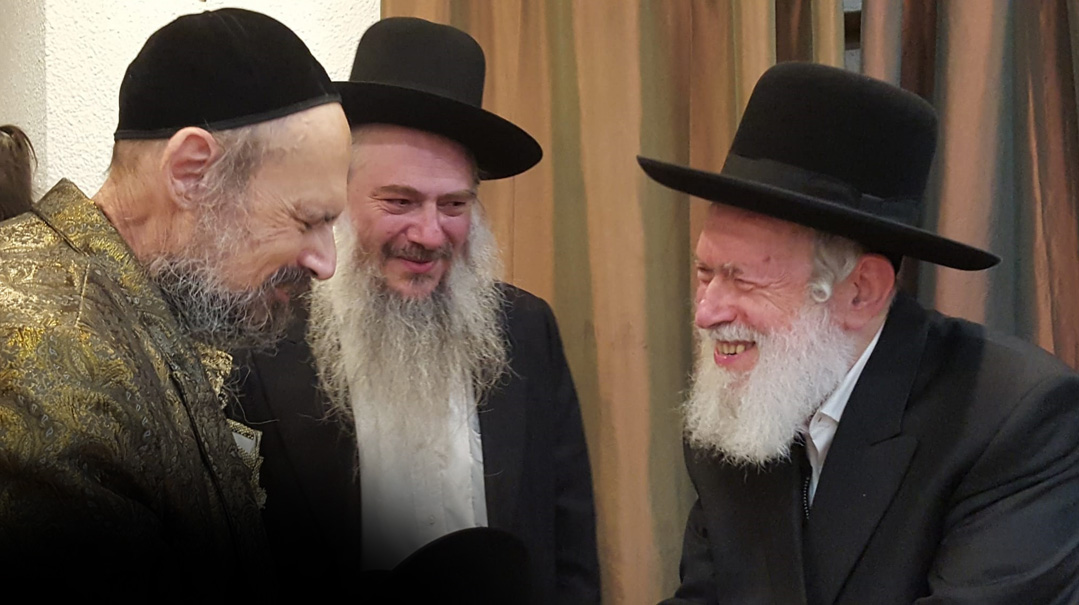
Rav Yitzchak Zilberstein doesn’t have much say in his son-in-law’s health matters, but when he sends chocolate, Rav Dov deviates from his practice and tastes a bit
Who Could Resist the Light?
When the Kooks came to Teveria 30 years ago, it wasn’t the chareidi enclave it is today, but that didn’t stop Rav Dov from sensing the inherent kedushah of the ancient city. According to Rav Ohev-Tzion, Rav Dov would always travel to Teveria on 26 Iyar, the yahrtzeit of the Ramchal, in order to daven at his kever.
“One year,” he says, “the yahrtzeit was on Friday, but the Rav left a bit late and arrived in Teveria close to Shabbos, where he stayed, having no choice. But then, as the city glowed with the holy light of Shabbos, he felt a great illumination and cried, ‘There is such a great light in Teveria and I will leave?’ And that was it. He’s been here ever since.”
At the time, Teveria’s distance from the Torah citadel of Bnei Brak encompassed a lot more than travel time. But the Rav seemed to thrive among the simpler people and attracted a cadre of followers, many of them baalei teshuvah, most of them Sephardic. And he then began to daven in their nusach.
“With the Rav, there’s no such division as Sephardi, Ashkenazi, chassidish, or litvish,” says Rav Ohev-Tzion. “There’s just one definition: Yehudi.” In fact, although his first mechutan is Rav Yosef Efrati, his other married children have spouses from varied backgrounds.
Rav Kook’s presence in Teveria turned him — albeit reluctantly — into the guardian of the city’s sanctity. Rav Ohev-Tzion shows us a photograph from years back. There’s Rav Dov, wearing his huge pile of tzitzis and his face aglow — but he’s standing on a stage with a microphone and singing.
What was Rav Kook doing singing at a wedding? “It was the wedding of a traditional family. The Rav came and realized that it was only out of respect for him that they were keeping the mechitzah in place and dancing separately. When he saw that, he went onto the stage, took the microphone, and didn’t let it go until the end of the wedding. He was ready to do anything, to sing Israeli folk songs and to dance the hora, as long as the dancing would not be mixed. But they didn’t lose out. Rav Dov, as anyone who’s been to his shul knows, has the voice of an angel.”
In fact, Rav Dov is no stranger to a stage and microphone. He has a highly developed musical sense, and rumor has it that in his youth, he played the clarinet. He occasionally even goes to a studio with a keyboard player, sits down, and records a tune. They do one take on the recording and that’s it. No practice, no preparation, no editing — unique, authentic music. There are even some geulah-related discs out there with his songs and pure, soft, caressing voice. And of course, anyone can hear him sing Hallel on Rosh Chodesh, which he does with a microphone and musical accompaniment.
Rabbi David Sadeh remembers another wedding incident. “One day, I came to take the Rav to a wedding of one of the students in the yeshivah, but when I came to pick him up, he was feeling very weak and told me to ask the chassan forgiveness because he just could not make it.
“A few hours later, the Rav called and asked me to pick him up — from a different wedding. How could it be that the Rav, after feeling so unwell, suddenly got up and went to the wedding of a couple he didn’t even know, and who had not invited him? But Rav Dov didn’t even understand the question: ‘A bochur who learned with us can understand that I’m not up to coming. But when I heard about the other wedding, I knew that if I come there, I stop the mixed dancing. How could I not go?’”
And then, of course, was his famous 2019 battle for the sanctity of Teveria against incumbent mayor Ron Kobi, who called for a “secular revolution” in the city and planned to promote public Shabbos desecration and prevent any more chareidim from moving in. At the time, Rav Chaim Kanievsky came to his nephew’s assistance, writing a fiery letter in support of Rav Dov, and even coming to an emergency rally in the city.
“The Rav literally got sick over this battle,” Rabbi Sadeh relates. “One night the Rav began to recite Tikkun Chatzos, but instead of mourning for Yerushalayim, he was mourning Teveria. Suddenly he lay down on the floor and declared, ‘I’m not getting up from here until this rasha leaves.’ But after a few moments, the Rav suddenly stood up and declared, ‘Rabi Chaim Abulafia [rav of the ancient Jewish yishuv in Teveria] came to me and told me everything will be fine.’”
In the end, Kobi was ousted as mayor at the beginning of 2020 over a technicality — his failure to approve a budget, due to disagreements with city council members who voted to topple him.
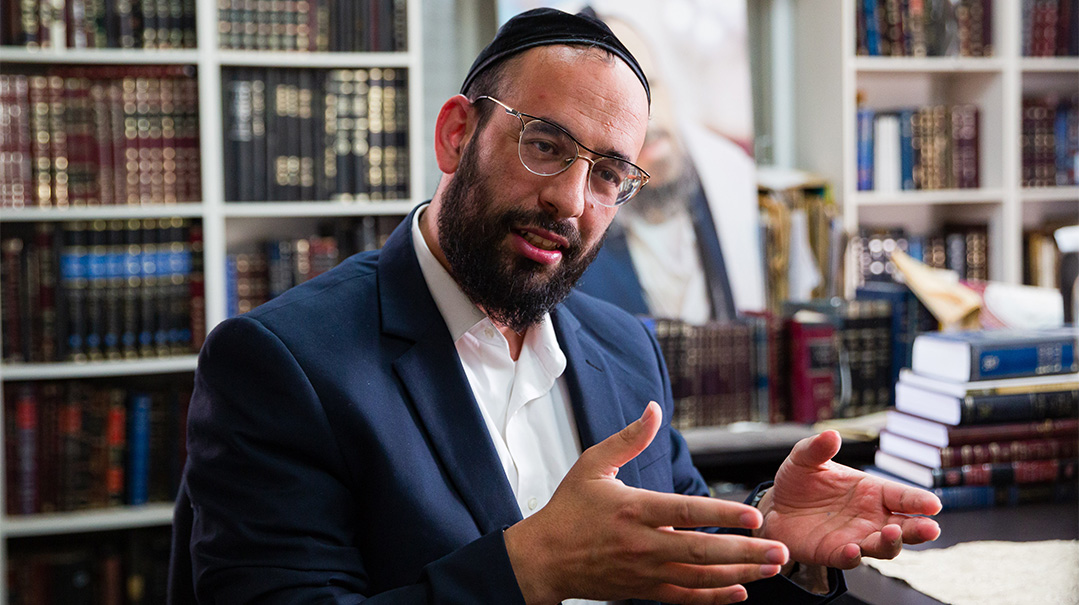
Rav Yekutiel Ohev-Tzion, who makes sure to gather up the Rav’s writings every day, says in this beis medrash, the only definition that matters is “Yehudi”
It’s All in the Head
It’s really a technical question: When does a person who dedicates so many hours to davening, have time for learning? “You don’t get it,” says David Sadeh. “There isn’t a moment that he isn’t learning. In fact, we never know for certain if he’s learning or davening. At any given moment he can be doing either. In the middle of Shemoneh Esreh you can see him stop to quickly scribble a chiddush that came to mind. If he doesn’t get it down, he feels like his brain will explode. He always has pens and paper at his side.”
“One tefillah davened properly is much harder for me than hours of learning,” Rav Dov once revealed. “In learning, there are all kinds of ways to ‘hitch a ride,’ so to speak. I have tracks to follow, a trench that’s already been dug. But in davening, I need to be mechadesh it all myself.”
During the week he writes down chiddushim as they come, on the ever-ready pads that are never far away. On Shabbos though, he needs to rely on the crowds to remember his running thoughts. On Shabbos day, between aliyos, he’ll verbalize the chiddushim that just occurred to him as people crowd around to listen, and he’ll beg them, “Please, on Motzaei Shabbos, remind me, Kesubos 25b.”
With so much nonstop writing, Rav Dov’s hands are permanently ink-stained — but he sees the ink stains of chiddushei Torah as an adornment, like the Kohanim in the Beis Hamikdash saw it as a sign of honor to wade up to their knees in blood.
In recent years, a team of Torah scholars has been organized to decipher and review his notes and help transform his chiddushim, on both revealed Torah and on Kabbalah and chassidus, into works that are more easily accessible and understood, adding to his nearly 200 already published works.
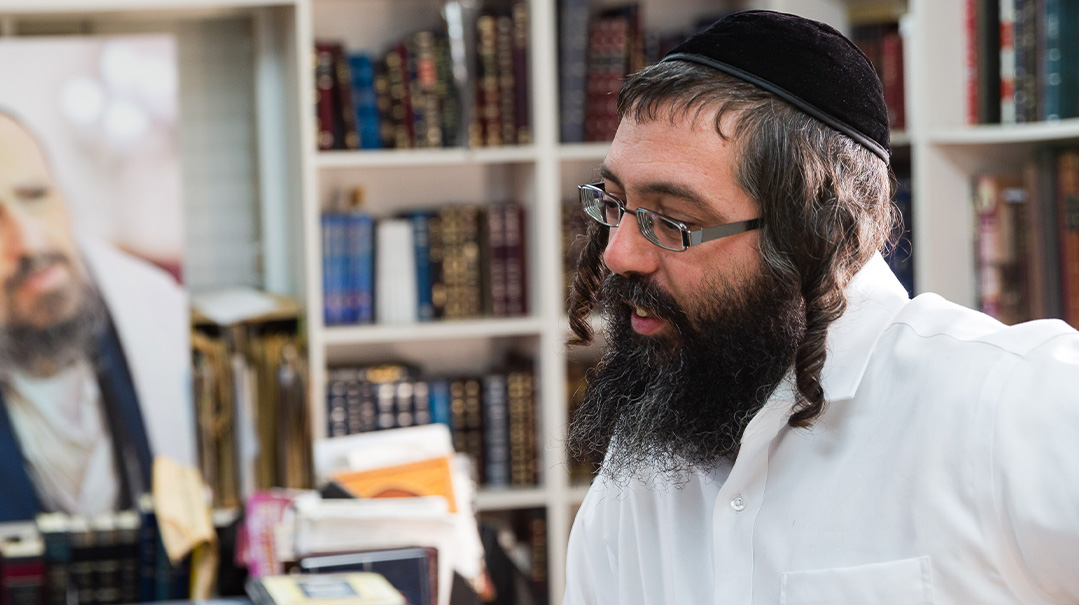
“We never know for certain if he’s learning, davening, or doing both.” David Sadeh is one of Rav Kook’s closest people, but still hasn’t figured it out
Before the Camera
We’re finally given notice: The Rav has finished davening and has left the shul. Another few minutes of clarifications and it emerges that this time, a certain apartment he sometimes uses has been chosen as today’s location. The door is locked, though, with explicit instructions not to disturb the Rav until he’s finished writing his chiddushim.
And then it happens. Rabbi Sadeh gets a call — the Rav will see us around shkiah, when he removes his tefillin.
The time arrives. A few knocks, and the door opens. After hours of intense davening, with his body and consciousness in a heightened state, the light shining from his pure face fills the house, and this is no exaggeration. There is a Gemara open in front of him and he’s holding the ubiquitous notebook and blue pen, his hand flying across the pages in his spindly scrawl.
His unbelievable self-negation is felt the minute we shake the thin hand. The Rav literally shrinks back. “Sit,” he urges. “Give me a brachah.”
A brachah? With what, we whisper, should we bless the Rav? And then his eyes catch sight of our photographer Elchanan’s camera. “This is the advantage of a person over an animal,” he begins to explain. “Man has three-dimensional vision. He sees height, width, and depth. Animals, in contrast, have two-dimensional vision. The technology of the camera has elements of both.” He stops for a moment and continues, almost pleading, “You are the shaliach to remind me of the Divine Photographer. Bless me please, command me, tell me the following words: ‘That you should merit to purify the tzelem adam in you, that you should not have a tzelem beheimah, and you should be favored as you were born b’tzelem.’”
The Rav wants to hear our analysis of current world events, but we soon realize that in his universe, current events hold mystical significance that we cannot fathom. Russia represents a certain spiritual power, Ukraine a completely different power. Yet what of the Jewish children now fleeing to Eretz Yisrael — who will guarantee their spiritual future? “A spiritual murder,” he whispers, “is much more brutal and painful.”
The situation in Israel, with the brouhaha about bringing chometz into hospitals, is at the forefront of his mind as well. “Gadol hamachti’o,” he cries with his eyes closed, and then quickly writes something down. He pauses and puts a hand on his head, as if holding back a wave of thoughts that threaten to sweep forward.
“Bless me,” he pleads again before we leave, “that I should merit to learn, daven, and be a Jew.” Again, his eyes close in prayer, and we realize that we really have no idea which realms he is occupying.
Rav Dov discusses a few more esoteric ideas with us — Geulah, Mashiach, final tikkunim. But then, as graciously as he can, he self-effacingly apologizes that time is short, and bids us farewell.
We leave the room with less than a speck of comprehension of this man who clearly sees, thinks, and lives in a world beyond our own. But while we understood nothing, we are still warmed by one certainty: the knowledge that in our confused and distant era, there still exist those other-worldly angels who keep us safe.
(Originally featured in Mishpacha, Issue 907)
Oops! We could not locate your form.







